Warren Feeney – 30 August, 2017
And why commemorate five years of the gallery's closure? Throughout much of the time it was closed, the CAG's Outer Spaces delivered a schedule of exhibitions that often compensated for, or matched, the Gallery's Montreal Street programme. Isn't commemorating the period of the Gallery's closure assuming without question the authority of the white cube space of the gallery as a site for art over public and transitional spaces?
Five “Significant” Works of Art over Five years.
It began with an invitation from New Zealand Insurance, the Christchurch Art Gallery Foundation and Friends of the Christchurch Art Gallery, heralding “we’re letting the cat out of the bag, and you’re invited.” The cat turned out to be the announcement that the fifth “significant” work of art to be acquired through the Christchurch Art Gallery Foundation for the Gallery’s collection to mark its five years of closure will be a commission from Ron Mueck.
The choice of Mueck and the announcement that the new work would be acquired through a campaign to secure $1 million, of which $400,000 had already been raised, is a milestone in fundraising for a work of art in New Zealand. Yet, it also raises questions about the five year campaign and the selection of works. Is the Mueck significant because it is the fifth to be chosen by the Christchurch Art Gallery? Why should it be significant to Christchurch residents?
And why commemorate five years of the gallery’s closure? Throughout much of the time it was closed, the CAG’s Outer Spaces delivered a schedule of exhibitions that often compensated for, or matched, the Gallery’s Montreal Street programme. (I am thinking of Jess Johnson’s Wurm Whorl Narthax, Hannah and Aaron Beehre’s Waters above Waters Below, Yvonne Todd’s The Wall of Man and the group exhibition Burster Flipper Wobbler Dripper Spinner Stacker Shaker Maker). Isn’t commemorating the period of the Gallery’s closure assuming without question the authority of the white cube space of the gallery as a site for art over public and transitional spaces?
More critical, however, is the question of how the selected works align with the Gallery’s collection policy. What is its collection policy? The nearest I can find to a public statement on the Gallery’s website refers to a group exhibition from 2007 of new acquisitions: “The Gallery has a policy to collect important works of art that enhance and build on its permanent collections.” (1) But “important” is camped in the same territory as “significant” and its permanent collection, like many of New Zealand’s public galleries, includes regional, national and international works. The CAG’s collection policy seems too generous. Fundamentally it can be all things to all people: for example, two of the five “significant” works acquired to date are by English artists, Martin Creed and Bridget Riley. Is their inclusion a link to the Gallery’s founding collection of Royal Academy paintings and a reminder of its historical association with British art and culture?
Yet, it is possible to maintain that the selected works commemorating the Gallery’s years of closure represent a distinct and unified body of work, but not necessarily because they have an association with circumstances in Christchurch from 2011 to 2015, (apart from Michael Parekowhai’s On First Looking into Chapman’s Homer). As a group they are all (a) large works of art, (b) by senior artists with an international profile, (c) priced between an estimated $500,000 to $1,000,000 and (d) embody a pre-existing relationship with the Gallery’s director Jenny Harper.
In order of their year of acquisition, here are the works with their dimensions and pre-existing relationship:
(a) Michael Parekowhai’s On First Looking into Chapman’s Homer (2,510 x 2,710 x 1,750 mm) was recommended to Creative New Zealand by an external advisory panel convened by Harper as Commissioner for the 2011 Venice Biennale.
(b) Bill Culbert’s Bebop (approximately 2,500 x 2,000 x 21,000 mm). Culbert was New Zealand’s representative for the 2013 Biennale with Harper again as Commissioner.
(c) Martin Creed’s Everything is going to be Alright (1,468 x 46,000 mm) was recommended to Harper as a potential acquisition by the Michael Lett Gallery which had also acted as agent for the Parekowhai purchase.
(d) Bridget Riley’s Cosmos (approximately 1,800 x 5,000 mm) a work by an artist well-known to Harper who met her while attending the Courtauld Institute in 1981 when Riley was the subject of her Masters of Philosophy thesis.
(e) The commissioned Ron Mueck work. The exhibition, Ron Mueck, opened 2 October 2011 and closed 27 January 2011. It holds the record for the highest visitor numbers to attend an exhibition at the CAG. Taking place in 2010 the artist is well-known to Harper and former curator Justin Paton. With record attendances of 135,000 visitors and the Gallery also recording its highest percentage of first-time visitors, Mueck’s historical association with the CAG embodies a significant achievement in its history.
When announcing the Mueck commission, Harper stated: “Mueck seemed to be an obvious choice for the fifth artwork… the Mueck exhibition in Christchurch defined a moment in the city between the September 2010 and February 2011 earthquakes.” Harper is right, but her comments fail to also acknowledge that this “between moment” is not at all about the circumstances that closed the Gallery for five years after the Mueck exhibition had finished.
In varying degrees all five works have been subjected to metaphorical and symbolic association that have varied from the applicable to the oblique. Parekowhai’s On First Looking into Chapman’s Homer, sited in the central city on Madras Street in July 2012 can take credit for attracting significant numbers (55,000) back to central Christchurch for their first post-quake look at how things were.
Bill Culbert’s Bebop was implicitly contextualised, without any immediate reference to the city or the Gallery. Harper stated “When our gallery re-opens, it will soar above the white marble staircase. It’ll become part of our legend: valued, loved, responded to and enjoyed for many years.” (2)
Creed’s Everything is going to be Alright encompassed closer associations with the city’s well-being during challenging times: “It gives us reassurance and hope. For those of us that stayed in Christchurch, hope is what we have needed and clung to the most…. It is perfect as a symbol.” (3)
Riley’s Cosmos was described as an “amazing coup…. People are amazed that she is doing something for us. She has been watching and is very conscious of what we have gone through in the five years of being closed and how we have made work available in the city in different ways and she is full of admiration for how the gallery has pulled through.”
Could more appropriate alternative works have been considered that more closely identify with the time and place of life in Christchurch between 2011 and 2015 and been accorded a similar status as part of the Gallery’s permanent collection?
The Christchurch Art Gallery’s collection policy under Harper’s directorship changed substantially when she took up the position in 2006. It felt like a breath of fresh air, with the period from 1995 to 2006 lacking lustre, and with many previous opportunities to acquire works by artists like Shane Cotton missed. Under Harper’s directorship acquisitions revealed evidence of an appreciation and comprehension of post-modernist practice through the work of artists like Ronnie van Hout and Steve Carr.
There is also an important element of ‘catch-up’ about the current collection policy — an intention to cultivate its status — making it more comparable to Auckland’s, Wellington’s and Dunedin’s public galleries. The CAG’s collection in 2017 is a robust and exciting experience and this has to be credited to Harper. (Culbert’s Bebop, currently suspended from the ceiling in the Gallery’s foyer, announces a previously unseen attitude from the city’s public gallery about what the visual arts can be and how we experience them.)
So, regardless of claims about five works commemorating the Gallery’s years of closure, the outcomes to date provide significant evidence that it has also been about proselytising the significance of its collection. What better way to gather wider public support for the Gallery than by appearing to take ownership of the circumstances that have defined Christchurch’s recent history, turning the Gallery’s closure into a positive, suggesting that there is a way forward. Linking all five works together is the Gallery’s marketing voice, presenting them, in spite of the lack of obvious associations, as belonging to the collection through an argument that also makes them attractive to potential donors.
There are also pragmatic reasons for this grouping. Harper has publicly acknowledged that the City Council’s reduction in annual funding for acquisitions from a modest $250,000 to $80,000 per annum and the success of the fundraising campaign for Parekowhai’s On First Looking… “sparked” the larger campaign.
On First Looking… has been a bit like John the Baptist spreading the good word about artworks still to come. It also represents a legacy for the arts in Christchurch that, six years ago, could not have been anticipated. Harper has changed the culture and nature of fundraising for the arts in Christchurch forever.
All five works have been acquired through private donations, varying from a single donor, groups of donors, gala fundraising dinners and crowd funding. The purchase of Parekowhai’s On First Looking… began with significant private donations, prior to a public announcement to secure the remaining $206,000 through Pledge Me.
As an endowment partner for the Christchurch Art Gallery Foundation, Neil Graham, (a co-founder of Mainfreight trucking company), generously purchased and gifted Creed’s Everything is going to be Alright, while Riley’s Cosmos was acquired through the support of twelve philanthropic arts supporters.
Accompanying the announcement of the acquisition of Culbert’s Bebop, Harper also announced the Foundation’s intentions to raise an additional $5 million for an endowment fund. Interest from its investment will sustain the future of the Gallery’s collection. Currently seeking to raise the remaining $600,000 for the commissioned Mueck, the endowment campaign was also accompanied by the announcement that it “hopes to break the gallery’s own record for the most amount of money raised through crowd funding in New Zealand.” (4)
In total, it is predicted that under Harper’s directorship, the Gallery (or more accurately, the Christchurch Art Gallery Foundation) will have raised $3million over the past four years for “significant” works of art, as well as an additional $3 million for its endowment fund.
This is good news for a public gallery in a main centre currently operating on, what must be, the most meagre acquisition fund allocated by any local government in Australasia. The difference between the Christchurch City Council’s contribution per annum and the Christchurch Art Gallery Foundation’s is substantial. City Council has averaged approximately 9.6% per annum of funds towards an acquisition’s sum over the past four years that totals $3,320,000. It is a credit to Harper and the Gallery that it has responded so assertively to a substantial reduction in funding.
Disappointingly, however, this also reveals how little circumstances have changed in local government’s support for the visual arts in Christchurch over the past 100 years. From 1912 to 1932, the City Council allocated £50.00 per annum, (that is £1,000 over 20 years) to be spent by the Canterbury Society of Arts (CSA) to purchase works of art for its collection, the majority of which are now in the CAG’s founding collection. Over that period, the CSA paid £2,291 for 50 works, with the City Council’s contribution making up 37% of this total cost.
Harper has also recently commented about the Gallery becoming a potential victim of its success in an era when the increasing scale of funding required for suitable works for its collection is unlikely to be provided by City Council.
More important, however, is that the Gallery’s success in fundraising highlights the essential, and ongoing, triumph of neoliberal policies implemented by central and local government in the 1980s that, for galleries and museums, saw a shift from the intellectual and cultural possibilities of their resources to being reconsidered as economic assets, capable of contributing to a city or region’s economic well-being through performance indicators that were about quantity [visitor numbers] not quality. (5)
If there has been a significant downside to the professionalisation of the visual arts in New Zealand over the past 30 years, then it has been the willing and enthusiastic implementation of neoliberal policies by the first generation of arts professionals that emerged in the 1980s, taking up roles as directors and curators with accompanying ambitions for a successful career in the arts - this is the shift from the museum on a hill with a static permanent collection to Te Papa, the Auckland Art Gallery, followed by others, focusing upon a commitment to continually changing public programmes and seeking out “trophy” works of art for their permanent collections, counting visitor numbers as central to their outcomes in response to the increasing demands of local councils. The irony of such circumstances is hard to ignore. “It is striking that the arts and heritage sector, with predilections to challenge prevailing orthodoxy and aspirations to be the critic and conscience of society apparently endorse… the new era of cultural policy development.” (6)
So, from this perspective, the Christchurch Art Gallery’s acquisition of its five significant works is also about increasing its visitor count.
If the merit of the four “significant” works acquired to date is, broadly speaking, in their scale, expense and association with the international rather than the local, how else might “significant” be measured? The intimate and personal might be a good place to start, as well as an artwork’s capacity to connect to the specifics of revealing and contexturalising a particular community’s experience of a certain time and place. Such possibilities may be implicit in the Gallery’s claims about its selection, but not in the sense that collectively they mark its years of closure or, more importantly, acknowledge their community of regular visitors’ absence from the space of the public gallery that they own as rate payers over that period.
There are, in my view, other works of art that could have better represented the Gallery’s time of closure. Here are three of them.
Between 2011 and 2013, and without an artist’s studio for the first time in his life, Christchurch artist Philip Trusttum filled more than 50 drawing books he acquired from the Trade Aid shop with over 2,000 drawings in coloured pencils, measuring 14 x 20 cm. Appropriating the works of Hieronymus Bosch, My Little Pony and medieval Japanese prints, he worked in a temporary home across the other side of the city, using the most immediate source material of the books and other things around him. Over more than two years with no large 3 x 3 metre canvases to work on or pin to his studio walls, he waited for his home and studio to be rebuilt.
His circumstances were a lot like those of the Christchurch Art Gallery being closed for so long and having to make do elsewhere - and hasn’t that been the experience for most Christchurch’s residents over that period of time? Not only are Trusttum’s series of books an important body of work by the painter, they also reveal the response of a local artist without the familiar tools of his art to find a way to continue to make works of art, a situation typical of the circumstances of many artists in the city.
Second choice on this list is Joanna Langford’s Up from the plainlands, 2009. This work was an installation in the Christchurch Art Gallery on 22 February 2011 that in hindsight seemed aware of the shape of things to come. Assembled from found and recycled materials that included plastic bags and bamboo skewers, it appeared vulnerable - a work of art that felt like it wanted visitors to walk quietly and carefully around it with a tenuous ladder poised, leading to clouds above, looking down on a landscape perpetually teetering on collapse.
Langford took up the further possibilities of Up from the plainlands in a public space 18 months later, contributing to SCAPE public art biennial with The High Country. Located on the corner of Kilmore and Durham streets across the road from the cleared site once occupied by Cramner Courts, it felt like a solemn farewell to a departed city. Somehow Langford made an unprecedented natural disaster seem tragic, yet normal - sad yet liveable.
And finally, Ronnie van Hout’s Comin’ Down, that figure pointing to the sky on the roof of 209 Tuam Street, looking like Charlton Heston as the last human on earth in The Omega Man. Comin’ Down was installed for the Christchurch Art Gallery’s ten year anniversary celebrations since it opening on Montreal Street in 2003. Visible from 2013 to early 2017, van Hout’s warning from above that we are doomed, transformed Christchurch’s ruined cityscape into a set from an Armageddon movie, normalising the experience of living in a post-quake city. Yet it also dealt to 150 years of Victorian public sculpture in Christchurch—of local historical dignitaries standing on plinths, looking towards Gothic Revival Cathedrals, its Arts Centre and Museum.
Its title, Comin’ down, could be referring to the end of the city’s perceptions about itself. It is as though the fallen statue of its founder, John Robert Godley, had somehow put itself back together, and looking torn and seriously frayed, climbed to the tallest building of the ruined city, pointing its finger and reasserting its tenuous and dubious faith in God and British colonialism, right at home with its new-found architectural surroundings.
All three works define something tangible about the experience of Christchurch between 2011 and 2015, and they do so through the immediacy, familiarity, and intimacy of their details, marking a period in the city’s history, that also opens up more universal commentaries on our behaviours and ideologies, and, of course, our fragile relationship with the natural world.
Warren Feeney
(1) https://christchurchartgallery.org.nz/exhibitions/collect-new-acquisitions
(2) http://www.stuff.co.nz/the-press/opinion/perspective/10405774/A-city-treasury-of-visual-culture
(3) http://www.stuff.co.nz/the-press/christchurch-life/art-and-stage/visual-art/72427405/british-artist-martin-creed-brings-ironic-message-of-hope-to-christchurch
(4) https://www.stuff.co.nz/the-press/news/94470367/christchurch-art-gallery-to-raise-1m-for-new-artwork-by-celebrated-sculpture-artist-ron-mueck
(5) For an insightful discussion of these changes see: Susan F. M. Abasa, Policies. Practices. Public Pedagogy. Two Case Studies of Art Museum Educators in Aotearoa New Zealand, Palmerston North: Massey University, , PhD Thesis, 2014
Ibid, p. 218
(6) Ibid, pp. 219 - 220
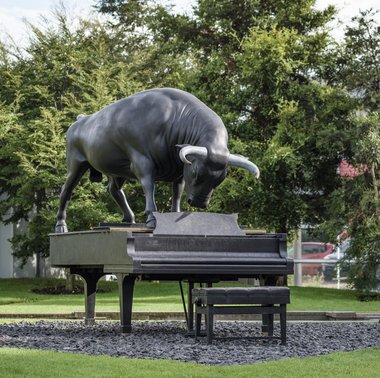
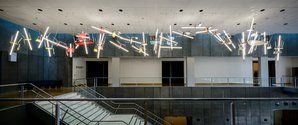



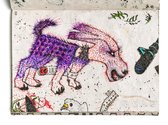
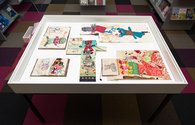

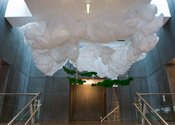
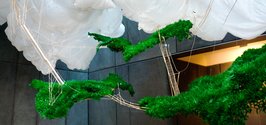

 Two Rooms presents a program of residencies and projects
Two Rooms presents a program of residencies and projects Advertising in this column
Advertising in this column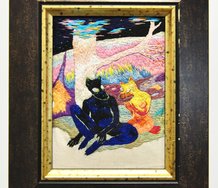
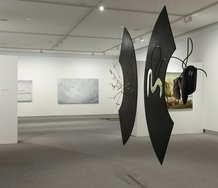
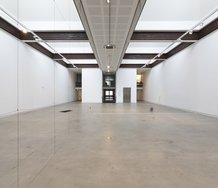

This Discussion has 0 comments.
Comment
Participate
Register to Participate.
Sign in
Sign in to an existing account.